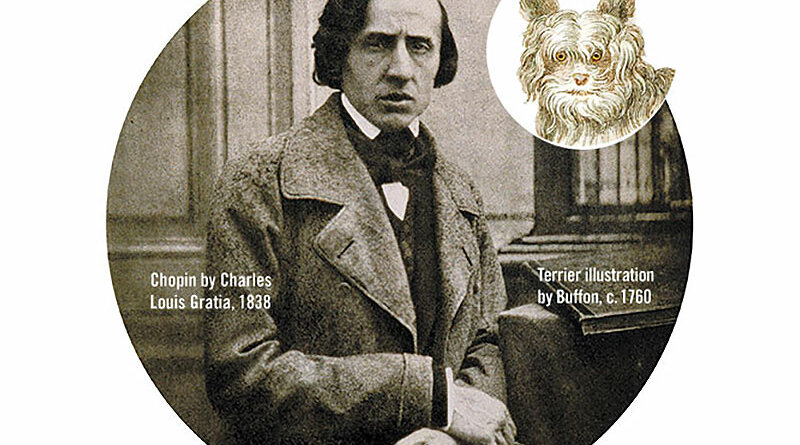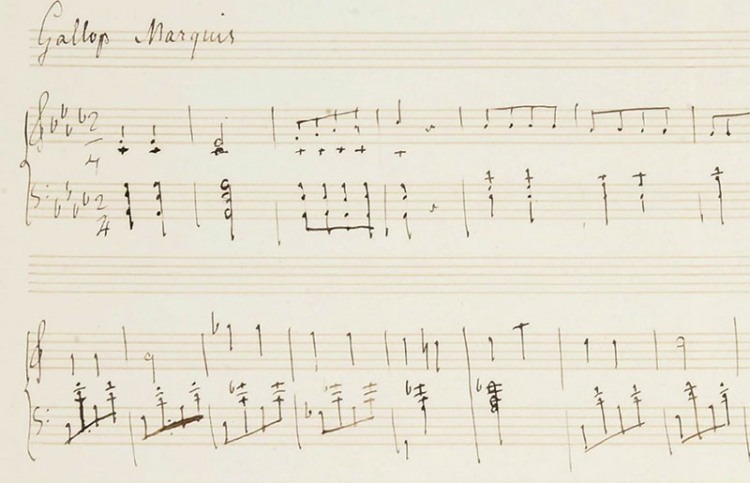Chopin and Marquis: Dances with Dogs
Marquis was a high-spirited little dog who lived in France in the 1840s. According to legend (and a few paintings that supposedly depict him), he was a Havanese-Bichon, but it’s impossible to know for sure. What’s indisputable is that Marquis had the distinction of being loved by two of the 19th century’s most innovative artists: George Sand and Frédéric Chopin. And even now, almost 200 years later, his spirit lives on in music.
When George Sand learned in July 1846 that the fluffy white canine was living unhappily in Paris, she decided to have him brought to her country estate, some 300 kilometers away, near the tiny village of Nohant in the Indre Valley. She dispatched Chopin’s servant, a loyal man named Pierre, to fetch the little toutou, as dogs are affectionately known in France.
In those days, sending a horse and carriage on a 60-odd-hour round-trip to pick up a dog was not, to say the least, a customary practice. So Sand devised a complex scheme, entrusting Pierre with a sheaf of music paper bound up to resemble a manuscript. His errand, Sand told him, was to carry important new compositions by his famous master to Paris. The pages, though, were blank. The real purpose of Pierre’s journey was to fetch little Marquis.
The summer of 1846 was the last that Sand and Chopin spent together before their nine-year romance came to a painful end the following year. Chopin’s health, fragile throughout his entire life, was so compromised when Marquis arrived that the composer remained indoors when the rest of the household took their daily walks in the countryside. The dog stayed home too, and became his fast friend and companion. “He is an extraordinary creature,” Chopin wrote to his family in Poland, “with fur like a marabou,” an exotic African stork whose downy feathers were used in fancy Parisian hats.
GET THE BARK IN YOUR INBOX!
Sign up for our newsletter and stay in the know.
Marquis—funny, intelligent and loyal—lay curled up on Chopin’s sofa as he worked at the piano. During this summer, Chopin composed two nocturnes, Op. 62; three mazurkas, Op. 63; and two waltzes, Op. 64. The first, a rapid-fire piece in D-flat major, was soon christened the “Minute Waltz,” even though it takes a good two minutes to play. But it’s also popularly known as “the waltz of the little dog,” and a legend soon arose that Chopin was inspired to write it after witnessing the crazy tail-chasing of his smallest friend.
Though Chopin never dedicated a composition to Sand, his greatest and most enduring love, later that summer, he paid tribute to Marquis in a galop, a fast and lively ballroom dance that was all the rage in Paris. The dance, so physically demanding that it only lasts a minute or two, was often the last one of the night, played just before exhausted guests went home after a joyous night of drinking, dancing and socializing.
After Chopin returned to Paris in November to resume his teaching duties, Sand wrote to him that Marquis was sniffing around his door, lamenting his absence. In a touching reply— one of his last letters to her— Chopin asks her to thank Marquis “for missing me.” His love for the little dog lives on in the brief, cheerful tribute in A-flat major, published after his own death and known as the “Gallop Marquis.”





